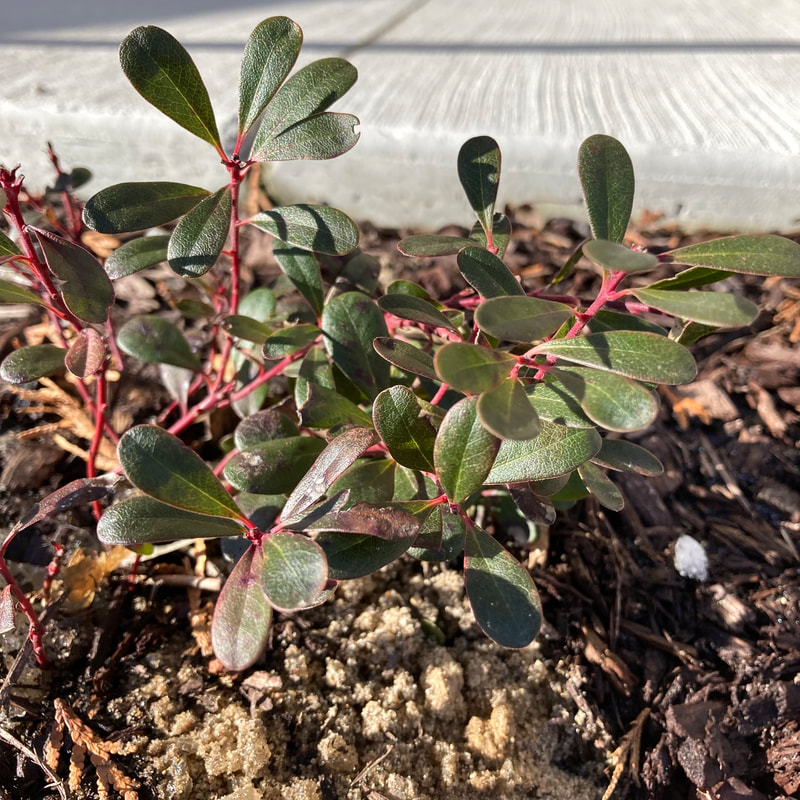|
Photo and article by Donna Iverson Looking for a plant to fill in around driveways or lawn edges? Or maybe replacing part of the lawn itself? Bearberry may fit the bill. A native perennial evergreen, Bearberry is a member of the Heath family. It is native to North America, Finland and Russia. As a ground cover, it can survive where other plants can’t. Extremely hardy, it grows in poor soil as a small creeping vine-like plant. Once established, it is tolerant of salt and drought. In May, it produces pink flowers which turn into red berries by fall. As well as a ground cover, it would be a good addition to a native plant garden. Companion plants might include coneflowers, coreopsis, liatris, sedums and goldenrod. In the wild, Bearberry grows along woodland edges. You can identify it by its shiny alternate leaves and reddish stems. It is sometimes referred to as a subshrub as it sends up 6 inch shoots. If you are a forager, its berries are edible but mealy and somewhat tasteless. Herbalists recommend small quantities to be on the safe side. Bearberry was called Kinnikinnick by Native Americans who smoked it along with a mixture of sage, mint, cover and Willow tree bark. It was also used medicinally to treat bladder problems.
0 Comments
Your comment will be posted after it is approved.
Leave a Reply. |
Archives
July 2024
Categories |

 RSS Feed
RSS Feed